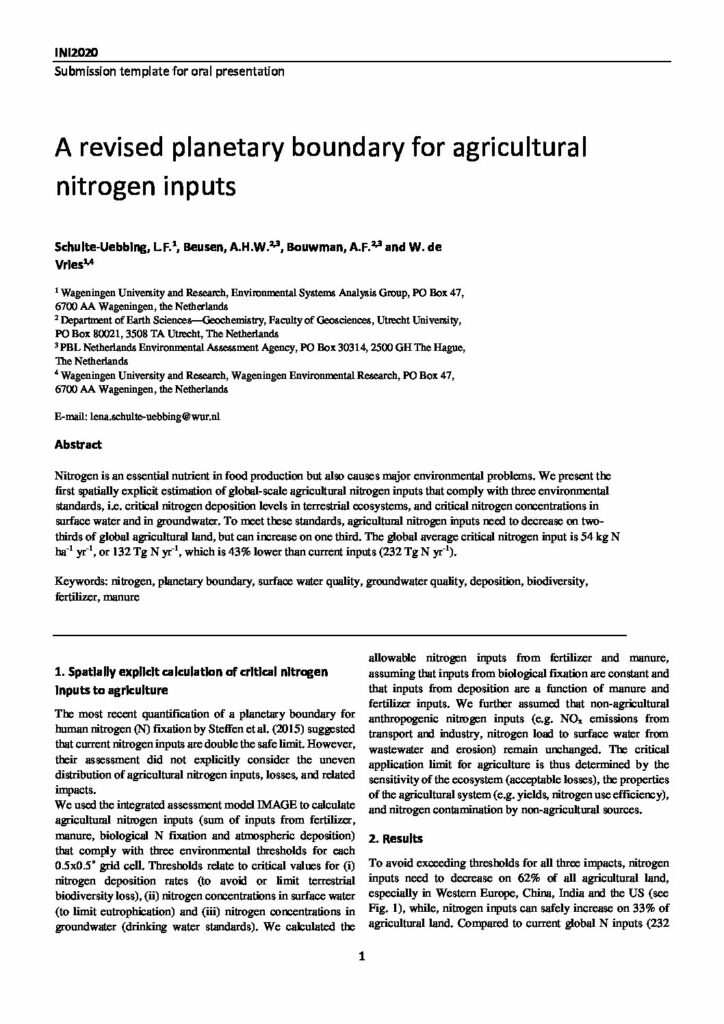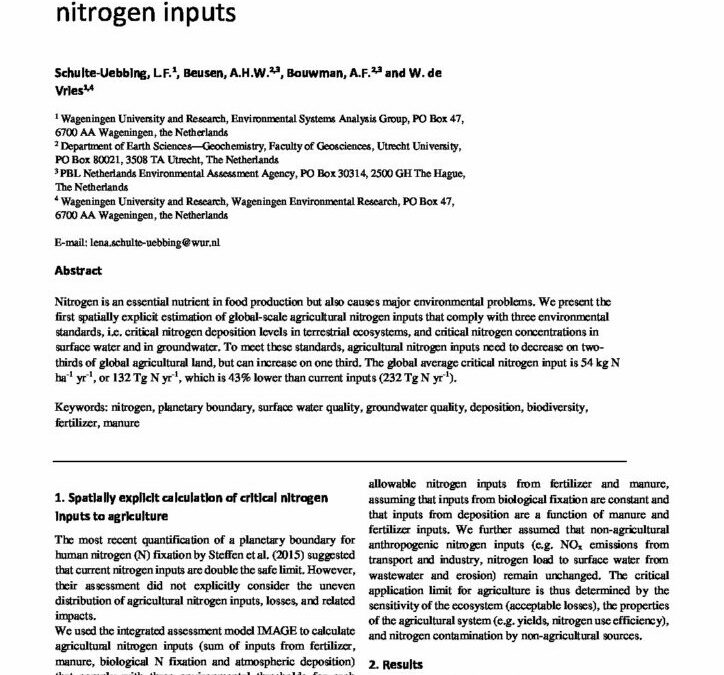A revised planetary boundary for agricultural nitrogen inputs

Nitrogen is an essential nutrient in food production but also causes major environmental problems. We present the first spatially explicit estimation of global-scale agricultural nitrogen inputs that comply with three environmental standards, i.e. critical nitrogen deposition levels in terrestrial ecosystems, and critical nitrogen concentrations in surface water and in groundwater. To meet these standards, agricultural nitrogen inputs need to decrease on twothirds of global agricultural land, but can increase on one third. The global average critical nitrogen input is 54 kg N ha-1 yr-1 , or 132 Tg N yr-1 , which is 43% lower than current inputs (232 Tg N yr-1 ).
The most recent quantification of a planetary boundary for human nitrogen (N) fixation by Steffen et al. (2015) suggested that current nitrogen inputs are double the safe limit. However, their assessment did not explicitly consider the uneven distribution of agricultural nitrogen inputs, losses, and related impacts. We used the integrated assessment model IMAGE to calculate agricultural nitrogen inputs (sum of inputs from fertilizer, manure, biological N fixation and atmospheric deposition) that comply with three environmental thresholds for each 0.5×0.5˚ grid cell. Thresholds relate to critical values for (i) nitrogen deposition rates (to avoid or limit terrestrial biodiversity loss), (ii) nitrogen concentrations in surface water (to limit eutrophication) and (iii) nitrogen concentrations in groundwater (drinking water standards). We calculated the allowable nitrogen inputs from fertilizer and manure, assuming that inputs from biological fixation are constant and that inputs from deposition are a function of manure and fertilizer inputs. We further assumed that non-agricultural anthropogenic nitrogen inputs (e.g. NOx emissions from transport and industry, nitrogen load to surface water from wastewater and erosion) remain unchanged. The critical application limit for agriculture is thus determined by the sensitivity of the ecosystem (acceptable losses), the properties of the agricultural system (e.g. yields, nitrogen use efficiency), and nitrogen contamination by non-agricultural sources.
